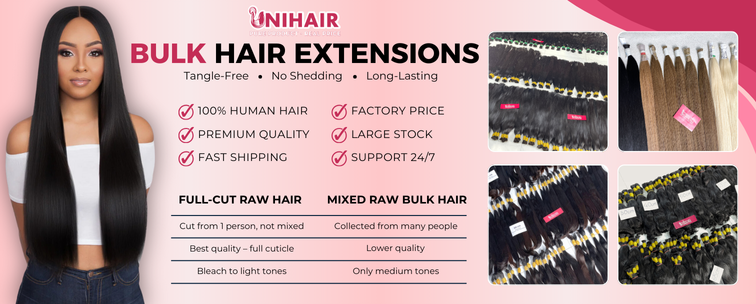
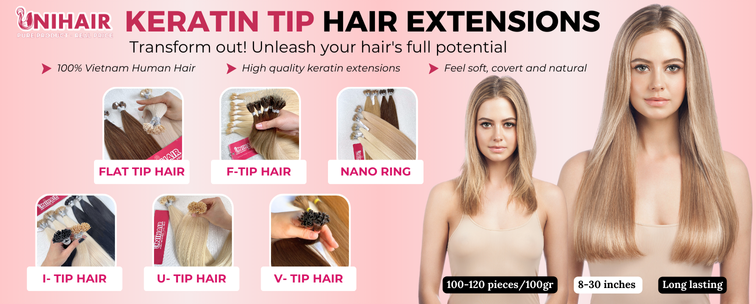
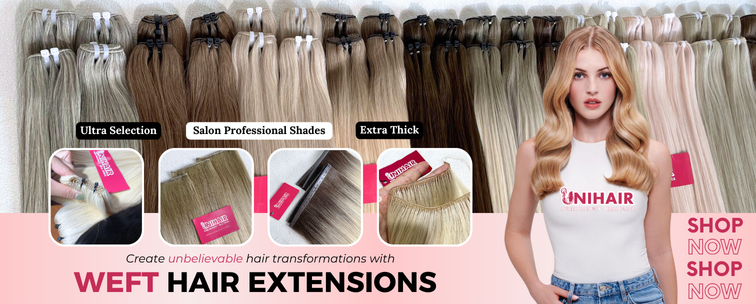
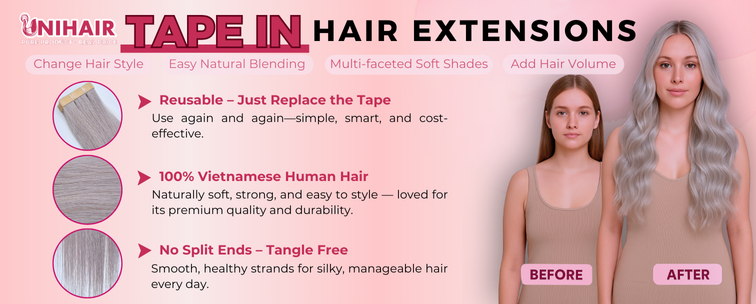
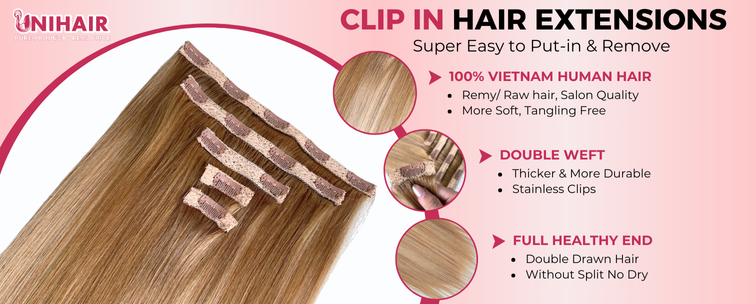


Raw Hair Wefted
Raw Hair Wefted
Raw Hair Wefted
Raw Hair Wefted
Raw Hair Wefted
Raw Hair Wefted
Raw Hair Wefted
In the world of hair extensions and weaves, terms like “Raw Hair” and “Virgin Hair” are frequently thrown around, often interchangeably, leaving many puzzled about their true differences. In this comprehensive guide, we delve deep into the intricacies of Raw Hair vs. Virgin Hair, uncovering the top six key disparities between these two popular types. By the end, you’ll be equipped with the knowledge to make informed decisions about which hair type aligns best with your preferences and needs. Let’s embark on this journey of discovery into the world of hair extensions and weaves. 

Raw hair refers to unprocessed human hair collected directly from donors. Unlike processed hair, raw hair has not undergone any chemical treatments such as dyeing, perming, or bleaching. It retains its natural texture, color, and strength, making it highly prized for use in hair extensions, wigs, and weaves.
Raw hair is sourced ethically and sustainably from individuals who have not altered their hair with chemical treatments or heat styling, ensuring its authenticity and quality.
Raw hair Vietnam is available in a variety of textures, reflecting the diverse natural hair types of donors around the world. Common textures of raw hair include:
Straight: Raw hair with a straight texture is sleek, smooth, and free-flowing. It lacks natural curls or waves and maintains a straight appearance even when wet.
Wavy: Wavy raw hair features gentle waves or loose curls, adding volume and dimension to hairstyles. It offers a balance between straight and curly hair textures, providing versatility in styling options.
Curly: Curly raw hair has tight curls or coils, creating voluminous and textured hairstyles. It ranges from loose curls to tightly coiled patterns, allowing for a variety of curly hair looks.
Kinky: Kinky raw hair has tightly coiled or zigzag-shaped curls, commonly referred to as afro-textured hair. It is characterized by its density, shrinkage, and natural volume, offering unique styling possibilities for natural hair enthusiasts.
The grading system for Vietnamese raw hair pertains to the thickness of hair extension bundles from the root to the tip. This categorization typically comprises three main quality grades: Single-drawn, Double-drawn, and Super double-drawn.
Single Drawn: Single-drawn hair exhibits a lower thickness compared to its double and super double-drawn counterparts. Within each bundle, there are varying lengths, lending the hair a natural and subtly layered appearance. Single-drawn hair is well-suited for everyday use and casual occasions.
Double Drawn: Double-drawn hair undergoes a more meticulous sorting process than single-drawn hair. During this process, shorter hairs are meticulously removed, resulting in bundles that boast a fuller and denser appearance. This quality makes double-drawn hair ideal for achieving polished and sleek hairstyles characterized by consistent length and thickness.
Super Double Drawn: Super double-drawn hair represents the highest quality option available. Subjected to an even more stringent sorting process, it ensures the elimination of any remaining shorter hairs. Consequently, bundles exhibit an exceptionally uniform length and thickness from root to tip. This superior quality renders super double-drawn hair perfect for creating luxurious and glamorous hairstyles boasting maximum density and volume, resulting in a flawless finish.

Raw hair and virgin hair differ significantly in their origin and processing. Raw hair refers to hair that has been cut directly from a donor and has not undergone any chemical or mechanical processing. It retains its natural texture and color. On the other hand, virgin hair also comes from a single donor, but it may undergo minimal processing, such as washing and conditioning, to maintain its quality. The key distinction lies in the level of processing each type undergoes before reaching the consumer.
Another crucial difference between raw hair and virgin hair is their texture and quality. Raw hair tends to have a more diverse texture, reflecting the natural variations among donors. It can range from straight to curly or kinky, depending on the donor’s hair type. Virgin hair, while still high quality, may be more uniform in texture due to the minimal processing it undergoes. This variation in texture can influence the styling options and overall appearance of the hair extensions or wigs made from these types of hair.
When it comes to longevity and durability, raw hair often outperforms virgin hair. Since raw hair undergoes minimal processing, it retains its natural strength and resilience, making it less prone to damage from heat styling or chemical treatments. Virgin hair, while still durable, may be slightly more susceptible to damage due to the minimal processing it undergoes. Therefore, raw hair extensions or wigs may have a longer lifespan with proper care and maintenance compared to those made from virgin hair.
The cost and accessibility of raw hair versus virgin hair can also vary significantly. Raw hair, being in its most natural state, is often considered a premium product and may come with a higher price tag. Additionally, sourcing raw hair can be more challenging, as it requires direct sourcing from donors and may be available in limited quantities. Virgin hair, while still high quality, may be more readily available and affordable since it undergoes minimal processing. The cost and accessibility factors play a significant role in determining which option is more suitable for consumers.
Due to their differences in texture and processing, raw hair and virgin hair offer different styling options. Raw hair, with its diverse texture and natural qualities, provides versatility in styling, allowing for various looks ranging from sleek and straight to voluminous curls. Virgin hair, while still versatile, may offer a more uniform texture, which can influence the range of styling options available. Ultimately, the desired hairstyle and look can impact the choice between raw hair and virgin hair for extensions or wigs.
Ethical considerations also come into play when comparing raw hair and virgin hair. Raw hair, sourced directly from donors, requires transparency and ethical sourcing practices to ensure fair compensation and treatment of donors. Virgin hair, although also sourced from donors, may involve additional processing and handling, raising questions about the ethical practices within the industry. Consumers concerned about the ethical implications of their hair extensions or wigs may prioritize sourcing methods and transparency when choosing between raw hair and virgin hair options.

Embrace the timeless elegance of body waves with our natural color raw hair weft. Effortlessly versatile, this weft adds texture and movement to your hairstyle, enhancing your natural beauty with its gentle waves. Explore the details of this sample to discover the epitome of sophistication and style.
See details of this sample: Natural Color Body Wavy Raw Hair Weft

Elevate your locks with the vivacious charm of bouncy curls embodied in our natural color raw hair weft. Boasting vibrant bounce and volume, this weft infuses your hairstyle with energy and allure, making a statement wherever you go. Delve into the details of this sample to experience the perfect fusion of glamour and playfulness.
See details of this sample: Natural Color Bouncy Curly Raw Hair Weft

Unleash your inner goddess with the enchanting allure of burmese raw hair showcased in our natural color raw hair weft. Inspired by the beauty of curly burmese raw hair, this weft captivates with its luxurious curls and rich texture, offering a touch of exotic elegance to your look. Explore the details of this sample to embark on a journey of unrivaled sophistication and allure.
See details of this sample: Natural Color Burmese Curly Raw Hair Weft

Unleash your inner confidence with our Kinky Curly Raw Hair Weft. Designed to celebrate natural textures, this weft delivers bold and authentic curls that command attention. Whether you prefer defined coils or voluminous ringlets, this weft offers endless styling possibilities for every occasion. Dive into the details of this sample to embrace the empowering beauty of natural curly raw hair.
See details of this sample: Natural Color Kinky Curly Raw Hair Weft

Before any formal testing, visually inspect the raw hair bundles. Look for signs of processing or damage. Raw hair should retain its natural texture and color without evidence of chemical treatments like dyeing or perming. Variations in texture and color are normal and indicative of natural hair. Additionally, check for split ends or other damage, which could suggest poor quality or mishandling during collection.
Perform a strand elasticity test to assess the hair’s health. Take a small section of the hair and gently tug on it. Healthy raw hair should display some elasticity and bounce back when stretched. If the hair breaks easily or feels brittle, it may indicate damage or poor quality. Furthermore, observe how the hair reacts to heat by running a flat iron or curling iron over a small section. Raw hair should withstand heat without melting or burning, confirming its authenticity.
Conduct a water immersion test to differentiate between raw and processed hair. Fill a bowl with room temperature water and submerge the hair for a few minutes. Raw hair will maintain its natural texture and color when wet, whereas processed hair may change color or texture due to chemical treatments. After removing the hair from the water, gently squeeze out excess moisture and observe any alterations.
Evaluate the scent of the raw hair. Raw hair should have a neutral or slightly earthy odor, reflecting its natural state. Processed hair, on the other hand, may emit strong chemical odors due to dyes, bleaches, or other treatments. Sniff the hair closely and note any artificial or unusual smells. A strong chemical odor indicates that the hair is likely processed rather than raw.
Assess the shedding of the raw hair, which can indicate its quality. Gently comb or run your fingers through the hair, noting any strands that come loose. While some shedding is normal, excessive shedding may suggest issues with the hair’s quality or handling. Additionally, observe the hair for signs of tangling or matting, as these can also affect its usability and durability.

How to care for raw hair? You are curious about raw hair care tips, right? Read the following tips to find out more.
Raw hair requires gentle cleansing to maintain its natural texture and quality. Use a sulfate-free shampoo that is specifically formulated for delicate or natural hair types. Avoid harsh cleansers that can strip the hair of its natural oils and cause dryness or damage.
When washing, gently massage the shampoo into the scalp and hair, focusing on the roots to remove dirt and buildup. Rinse thoroughly with lukewarm water to ensure all traces of shampoo are removed without causing stress to the hair strands.
Proper moisture maintenance is essential for keeping raw hair healthy and hydrated. Use a moisturizing conditioner after every wash to replenish lost moisture and nourish the hair. Look for conditioners that contain natural oils or ingredients like shea butter, coconut oil, or argan oil to provide deep hydration and promote softness and manageability.
Additionally, consider using a leave-in conditioner or hair oil between washes to keep the hair hydrated and protected from environmental stressors.
Limit the use of heat styling tools to minimize damage to raw hair. Excessive heat can weaken the hair strands and cause dryness, breakage, and frizz. Whenever possible, allow the hair to air dry naturally or use low heat settings on blow dryers and styling irons.
Before applying heat, use a heat protectant spray or serum to create a barrier between the hair and the styling tool, reducing the risk of heat damage. Embrace heat-free styling techniques like braiding, twisting, or air-drying to maintain the hair’s natural texture and integrity.
Regular conditioning treatments are essential for keeping raw hair strong, smooth, and resilient. Incorporate deep conditioning treatments into your hair care routine at least once a week to provide intensive moisture and repair damaged hair. Choose a deep conditioner that is specifically formulated for your hair type and concerns, such as dryness, frizz, or damage.
Apply the deep conditioner generously to clean, damp hair, focusing on the mid-lengths and ends. Leave it on for the recommended time before rinsing thoroughly with lukewarm water. Regular conditioning will help keep raw hair looking and feeling its best, enhancing its natural beauty and vitality.

Raw hair typically doesn’t adhere to the traditional grading system used for processed hair extensions. Instead of grades, raw hair quality is assessed based on factors like texture, length, and overall condition. It’s important to remember that raw hair is sourced directly from donors and is minimally processed, so its quality can vary based on individual donors and collection methods.
The longevity of raw hair largely depends on how well it’s cared for and maintained. With proper care, raw hair extensions or wigs can last for a year or more. Regular conditioning, gentle handling, and minimal heat styling can help extend the lifespan of raw hair. However, it’s essential to remember that raw hair is a natural product and may experience some natural wear and tear over time.
Finding the best raw hair vendors which sell the best raw hair bundles can be challenging but not impossible. Start by researching online suppliers who specialize in raw hair extensions or wigs. Look for hair vendors raw hair with positive reviews, transparent sourcing practices, and a commitment to quality such as the following Vietnam raw hair wholesale: Unihair, KFhair, 8Hair, CyHair, ApoHair,…
You can also ask for recommendations from friends, hairstylists, or online communities dedicated to hair care. When vetting potential raw hair bundles vendors, inquire about their sourcing methods, processing techniques, and product guarantees to ensure you’re getting authentic raw hair.
Washing raw hair requires a gentle approach to preserve its natural texture and quality. Begin by detangling the hair with a wide-tooth comb or brush to remove any knots or tangles. Then, wet the hair thoroughly with lukewarm water. Apply a sulfate-free shampoo, focusing on the scalp and roots, and gently massage to lather. Rinse the shampoo out completely with lukewarm water, ensuring there is no product residue left behind.
Follow up with a moisturizing conditioner, concentrating on the mid-lengths and ends, and leave it on for a few minutes before rinsing thoroughly. Allow the hair to air dry or use a low heat setting on a blow dryer, and avoid excessive brushing or manipulation while wet to prevent damage.
In conclusion, discerning between Raw Hair and Virgin Hair is not merely a matter of semantics but a crucial consideration for anyone invested in their hair’s quality and authenticity. Through this exploration of the top six key differences, we’ve uncovered the nuances that set these two hair types apart, from their origins to processing methods. Whether you prioritize the untouched purity of Virgin Hair or the versatility of Raw Hair, this guide has empowered you to make informed decisions for your hair care routine. Here’s to embracing the beauty and diversity of hair, one strand at a time.